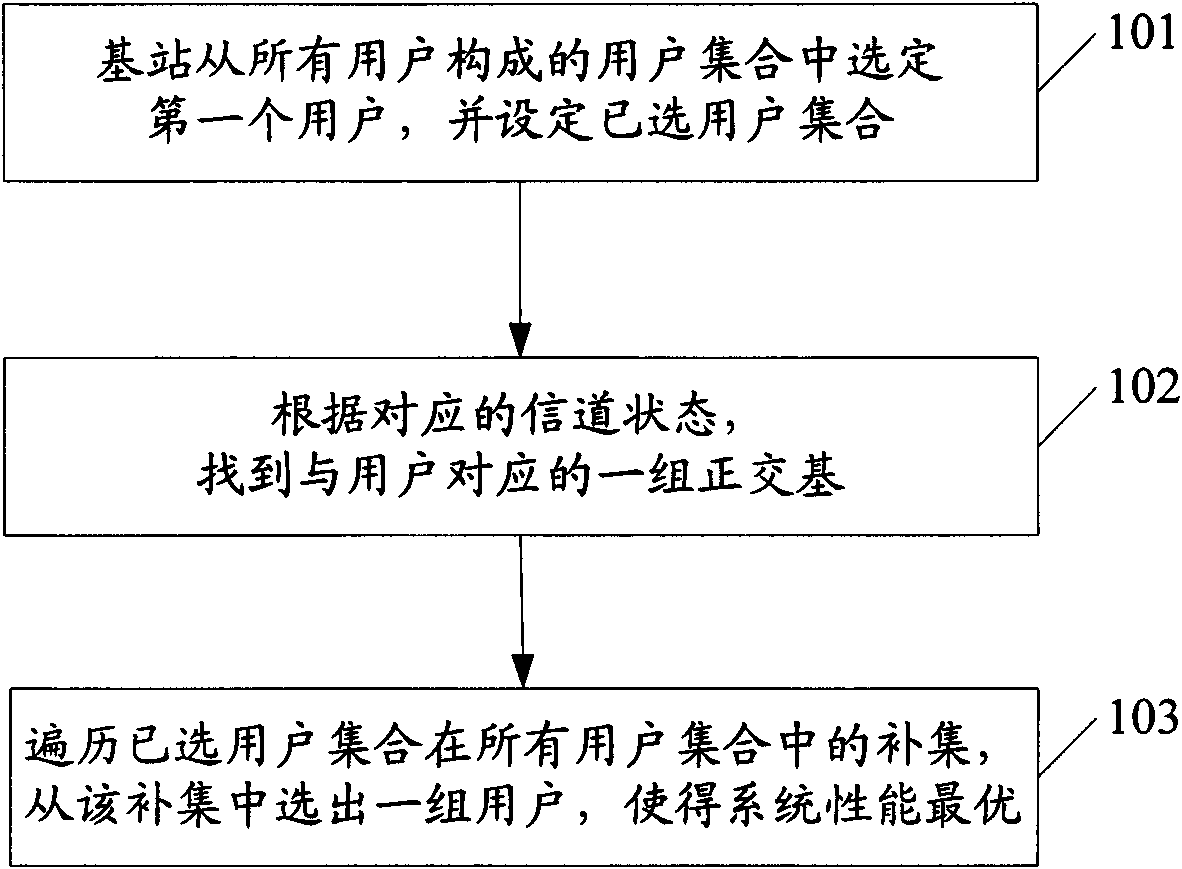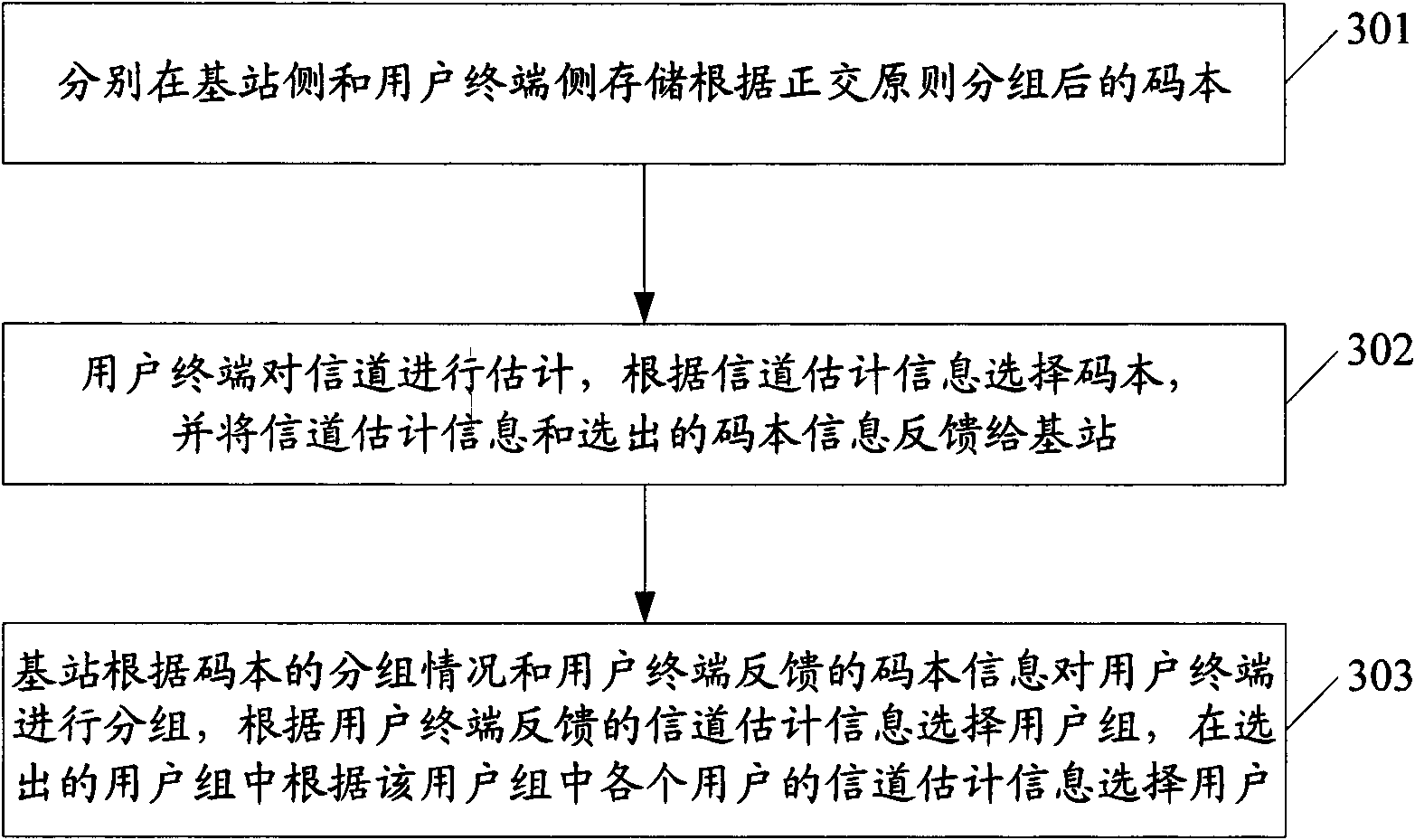User choosing method, device and system
A user and user group technology, applied in diversity/multi-antenna systems, space transmit diversity and other directions, can solve the problems of error, difficult application, and high algorithm complexity, and achieve the effect of ensuring performance and reducing complexity
- Summary
- Abstract
- Description
- Claims
- Application Information
AI Technical Summary
Problems solved by technology
Method used
Image
Examples
Embodiment Construction
[0053] In order to make the object, technical solution and advantages of the present invention clearer, the present invention will be further described in detail below with reference to the accompanying drawings and examples.
[0054] image 3 It is a flow chart of the user selection method provided by the present invention, such as image 3 As shown, the method includes:
[0055] In step 301, codebooks grouped according to the principle of orthogonality are respectively stored on the base station side and the user terminal side.
[0056] Step 302, the user terminal estimates the channel, selects a codebook according to the channel estimation information, and feeds back the channel estimation information and the selected codebook information to the base station.
[0057] In this step, the user terminal calculates the SINR value or CQI value corresponding to each codebook according to the channel estimation information, and selects the codebook corresponding to the maximum SI...
PUM
 Login to View More
Login to View More Abstract
Description
Claims
Application Information
 Login to View More
Login to View More - R&D
- Intellectual Property
- Life Sciences
- Materials
- Tech Scout
- Unparalleled Data Quality
- Higher Quality Content
- 60% Fewer Hallucinations
Browse by: Latest US Patents, China's latest patents, Technical Efficacy Thesaurus, Application Domain, Technology Topic, Popular Technical Reports.
© 2025 PatSnap. All rights reserved.Legal|Privacy policy|Modern Slavery Act Transparency Statement|Sitemap|About US| Contact US: help@patsnap.com



